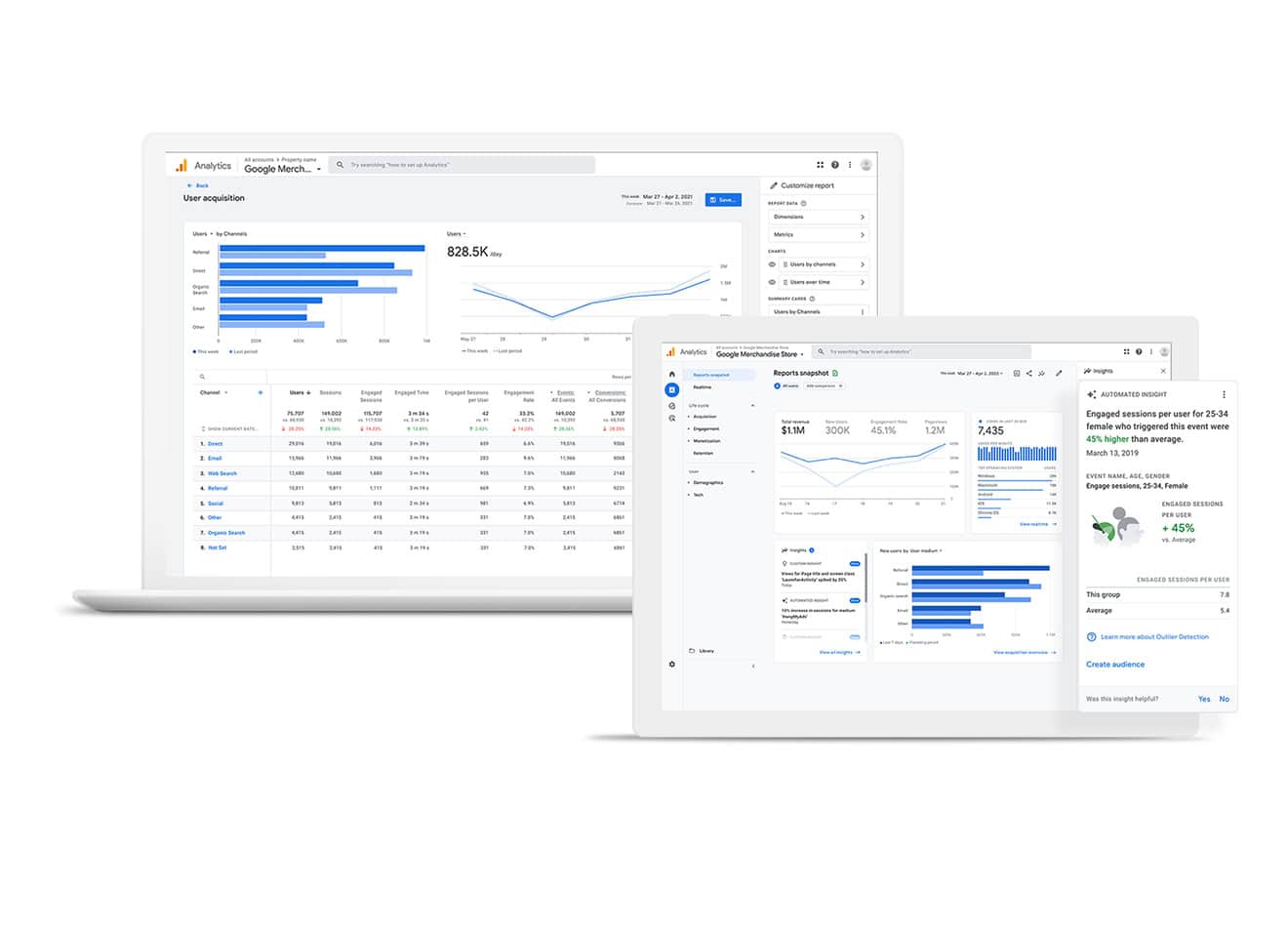Mastering Digital Marketing: A Complete Guide to Boosting Your Strategy Success in the rapidly evolving field of digital marketing depends on an awareness of the subtleties of consumer behavior and preferences. A comprehensive strategy that incorporates a number of tactics is crucial as companies work to attract the interest of their target market. This post will explore the essential elements of successful digital marketing, such as comprehending the customer journey, producing engaging content, utilizing data, customizing experiences, utilizing a variety of channels, putting A/B testing into practice, establishing credibility, & tracking outcomes. A roadmap that describes the steps a prospective customer takes prior to making a purchase is called the customer journey. There are usually multiple stages involved: awareness, consideration, decision, and post-purchase.
Key Takeaways
- Understanding the customer journey is crucial for creating a successful marketing strategy.
- Compelling content is essential for engaging and retaining customers throughout their journey.
- Leveraging data and analytics helps in understanding customer behavior and making informed decisions.
- Personalizing the customer experience can significantly improve customer satisfaction and loyalty.
- Utilizing multiple marketing channels can help reach a wider audience and increase brand visibility.
- Implementing A/B testing allows for optimizing marketing strategies and improving conversion rates.
- Building trust and credibility is important for establishing long-term relationships with customers.
- Measuring and analyzing results is necessary for evaluating the effectiveness of marketing efforts and making necessary adjustments.
Marketers need to understand this journey in order to effectively customize their strategies to meet customers at each stage. Potential clients learn about a need or issue during the awareness phase. This is the point at which you should educate them about your product or service through your marketing efforts. Search engine optimization (SEO), social media interaction, and content marketing all contribute significantly to drawing attention. You can establish your brand as a reliable source by offering insightful information.
As clients enter the contemplation stage, they start weighing their alternatives. Here, it’s critical to include thorough product details, comparisons, and user reviews. Case studies, infographics, and videos are examples of engaging content that can help highlight the advantages of your products.
Providing answers to frequently asked questions and concerns will help you help prospective clients make wise choices. Recognizing Your Viewers. It is essential to comprehend the needs, preferences, and pain points of your audience in order to produce content that appeals to them.
| Metrics | Value |
|---|---|
| Website Traffic | 5000 visitors per month |
| Conversion Rate | 3% |
| Email Subscribers | 1000 subscribers |
| Social Media Followers | 5000 followers |
Start by carrying out in-depth research to determine the subjects that are most important to your intended audience. Use resources such as social media analytics & Google Trends to determine popular topics and interest levels. Developing Useful Content.
Focus on creating valuable, high-quality content after you have a firm grasp of what your audience desires. These could be podcasts, videos, blog entries, or interactive materials that promote user involvement. Storytelling’s Power. Also, storytelling can be a very effective technique for producing content. By crafting stories that emotionally engage your audience, you can build stronger bonds with them. Featuring client success stories or offering behind-the-scenes glimpses can help humanize & increase the relatability of your brand.
Using analytics to maximize your digital marketing efforts is crucial in today’s data-driven world. Data gives marketers important information about consumer trends, preferences, & behavior, enabling them to make wise choices. Website traffic, conversion rates, & engagement levels are examples of metrics that can be analyzed to determine what is effective & what requires improvement. Establish specific objectives for your marketing campaigns first. Having clear goals will enable you to assess success more accurately, whether your goal is to increase website traffic or sales.
On your website, use tools such as Google Analytics to monitor user behavior. For insight into how users engage with your content, monitor metrics like average session length and bounce rates. Further insights into your audience’s preferences can also be obtained by segmenting them according to their demographics or behavior. As a result, marketing campaigns can be more precisely targeted to appeal to particular demographics.
You can improve performance and hone your tactics by regularly tracking and evaluating data. Customers now expect personalization; it’s no longer just a fad. Tailoring experiences to individual preferences can help your brand stand out in a world where consumers are inundated with generic marketing messages.
Using data to present offers and content that are pertinent to the behavior and interests of the customer is known as personalization. Email marketing is one efficient method of customizing the consumer experience. You can send messages that are specifically relevant to particular groups by segmenting your email list according to user behavior or demographics. Giving a customer tailored recommendations, for example, after they have expressed interest in a certain product category can greatly boost engagement and conversion rates. Using dynamic content on your website can also improve personalization. Displaying various offers or content according to user behavior or preferences is what this entails.
Showing off related products or exclusive offers, for instance, can provide a more personalized experience that promotes purchases if a visitor regularly peruses your website’s outdoor gear section. Using just one marketing channel is no longer adequate in the current digital environment. In order to optimize reach & engagement, companies need to implement a multi-channel strategy that uses a range of platforms and media. With this approach, brands can reach their target audience where they are most engaged.
Social media sites like Facebook, Instagram, LinkedIn, and Twitter present special chances for interaction and brand exposure. It’s critical to adjust your messaging to the unique audience demographics and content preferences of each platform. For example, informative articles might be more popular on LinkedIn, but visually appealing content might do better on Instagram.
Overall efficacy can also be increased by combining digital and traditional marketing channels. A consistent brand experience can be produced, for instance, by combining online promotions with print ads or direct mail campaigns. You can reach more people and boost conversions by varying your marketing channels. The fundamentals of A/B testing.
To guarantee accurate results, it is essential to concentrate on one variable at a time when using A/B testing.
This entails testing a single campaign element, like variants of a landing page design or email campaign subject lines, and evaluating the effectiveness of each iteration. The advantages of continuous A/B testing. You can keep ahead of the competition as consumer preferences and market trends shift by consistently testing and refining your campaigns. Instead of being a one-time endeavor, A/B testing ought to be a continuous procedure that enables you to improve your marketing tactics over time and make data-driven decisions. Using A/B testing to boost marketing effectiveness.
By using the results of A/B testing to inform data-driven decisions, you can learn what appeals to your audience the most and improve the effectiveness of your campaigns. In the end, this promotes business success by resulting in more successful marketing tactics. Long-term success in a time when consumers are becoming more dubious of brands depends on establishing credibility and trust.
Building a solid reputation should be a top priority for any business since trust affects purchasing decisions & encourages client loyalty. Being open and honest in your marketing is a good method to gain people’s trust. Make your brand’s values, mission, and practices clear to your audience in order to establish a genuine connection.
Also, putting client endorsements and reviews on display can serve as social proof to support your authority. Building trust is also greatly aided by social media engagement with your audience. Getting back to customers quickly shows that you respect their opinions and are dedicated to giving them outstanding service. You may develop a devoted following of customers who have faith in your company by keeping lines of communication open and actively interacting with your audience. Measuring & evaluating outcomes is the last phase in any digital marketing strategy in order to properly evaluate performance.
Without accurate measurement, it’s difficult to assess the effectiveness of your campaigns and pinpoint areas in need of development. Establish key performance indicators (KPIs) that are in line with your marketing objectives first.
Metrics like conversion rates, ROI, or customer acquisition costs (CAC) may be among them.
You can learn how well your strategies are working by routinely tracking these KPIs.
Track user behavior across channels and campaigns by using analytics tools. This information will assist you in determining which tactics are producing the desired effects and which may require modification. Regular performance reviews will also enable you to continuously improve your strategy and guarantee alignment with changing business goals. In summary, gaining a thorough grasp of the different tactics that combine to form an efficient strategy is necessary to master digital marketing. Businesses can dramatically improve their marketing efforts by comprehending the customer journey, producing engaging content, utilizing data analytics, personalizing experiences, utilizing multiple channels, putting A/B testing into practice, establishing credibility, and tracking outcomes.
Remember that flexibility is essential in this dynamic environment as you start your digital marketing journey or look to improve current tactics. Keep up with market developments and constantly hone your strategy using insights from data. To position your brand for success in the cutthroat digital marketplace, begin putting these strategies into practice right away!
If you are looking to further enhance your digital marketing strategies, you may want to check out the article on Search Engine Marketing Mastery Guide 2024. This comprehensive guide provides valuable insights and tips on how to effectively utilize search engine marketing to drive traffic and increase conversions. By combining the strategies outlined in this article with the principles of Optimize Engage Convert, you can create a powerful marketing campaign that yields impressive results.
FAQs
What does it mean to optimize, engage, and convert?
Optimize, engage, and convert are three key components of a successful marketing strategy. Optimization involves improving the performance of your marketing efforts, engagement focuses on building a connection with your audience, and conversion refers to turning leads into customers.
Why is it important to optimize, engage, and convert in marketing?
Optimizing, engaging, and converting are essential for driving business growth and increasing revenue. By optimizing your marketing efforts, engaging with your audience, and converting leads into customers, you can improve the overall effectiveness of your marketing strategy.
How can I optimize my marketing efforts?
You can optimize your marketing efforts by analyzing data, testing different strategies, and making data-driven decisions. This can involve A/B testing, analyzing website and campaign performance, and using tools to track and measure the success of your marketing efforts.
What are some strategies for engaging with my audience?
Engaging with your audience can involve creating valuable content, interacting with them on social media, hosting events or webinars, and personalizing your marketing efforts to cater to their specific needs and interests.
How can I improve my conversion rates?
Improving conversion rates involves understanding your target audience, creating compelling calls-to-action, providing a seamless user experience, and nurturing leads through the sales funnel. It also involves analyzing data to identify areas for improvement and making adjustments accordingly.










